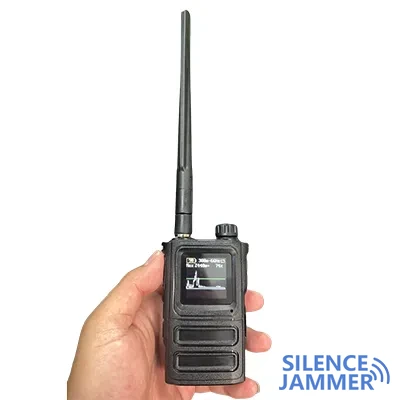We often encounter problems with video interference during video surveillance and video transmission meetings. Video interference causes display problems such as screen jitter and blurred display, which seriously affects the use effect.

Causes of video signal interference
1. Interference from front-end power supply: variable frequency motors in elevators, high-power motors in factories, substations, etc.
2. Interference in the transmission process: mainly electromagnetic wave interference, such as broadcast stations, telecommunications base stations, etc., as well as interference caused by cable damage and ground potential difference interference, etc.
3. Terminal equipment interference: mainly interference caused by equipment power supply and interference caused by connections.
4. Use of signal jammers
Solutions to video signal interference
1. First determine where the interference occurs, and first check whether there is interference from the front end of the camera. If there is, it is usually through the power supply (you can first use a 12V battery to verify whether there is power interference). You can use a switching power supply to power the camera, or You can install an AC filter for filtering, which can generally be solved;
2. If it is generated through the transmission process, first check the connection of the video cable and whether the shielding network is damaged. In addition, you can consider choosing anti-interference. Currently, there are two basic anti-interference principles in the market. One is to use the video baseband The signal is modulated to a frequency of 38MHZ or higher to avoid interference frequencies. The effect is OK, but if the interference frequency is close to 38MHZ, there is no way. The other is to use the method of increasing the amplitude of the video signal at the front end. , and then compression is performed at the terminal, because the amplitude of the interference signal is constant, the corresponding interference signal is compressed. This is a broad-spectrum anti-interference method, but the interference has a certain residual effect. It depends on the amplitude of video signal amplification and the location of the interference signal. The greater the amplitude and the closer the interference is to the front end, the better the anti-interference effect will be.
3. If the anti-interference effect is not obvious, it may be interference caused by the terminal (computer room). In this case, it is necessary to check the connection, power supply, grounding and equipment itself.
Coaxial cable is the most widely used video transmission medium and is generally used for the transmission of short- and medium-distance video signals. The electrical characteristics of coaxial cable make it ideal for carrying the full video signal from a camera to a monitor. Almost any kind of wire can be used to transmit low-frequency signals (20 Hz to several kilohertz). In practical applications, almost any wire can be used as a telephone line. But when you want to transmit video signals in the frequency range between 20 Hz and 6 MHz without any attenuation, you need to use coaxial cables.
Video baseband transmission is the most commonly used transmission method in TV surveillance systems. The so-called baseband transmission refers to a method that directly transmits full TV signals without any processing such as frequency conversion. The advantages of this transmission method are that the transmission system is simple; within a certain distance, the distortion is small; the additional noise is low (the system signal-to-noise ratio is high); there is no need to add additional equipment such as modulators and demodulators. The disadvantage is that the transmission distance cannot be too far; a video coaxial cable can only transmit one TV signal, etc.
Twisted-pair cables can effectively suppress common-mode interference. Even in strong interference environments, twisted-pair cables can transmit excellent image signals. For example, there will be strong interference in elevators and equipment rooms of buildings. Buildings in downtown areas will also be subject to various interferences from the surrounding environment. The strong anti-interference ability of twisted pair cables is greater than that of coaxial cables. Advantage.
Because this transmission method has the advantages of stable operation and simple equipment, it has been widely used in practice. However, the frequency band of the video signal is very wide, and the starting frequency is very low, so when it is transmitted in the cable, its amplitude and phase will be very different between the low frequency band and the high frequency band. Especially when the phase distortion is too large, it is difficult to compensate with a simple circuit. At the same time, the low-frequency part of baseband transmission is easily interfered by low-frequency interference sources such as electricity, telephones, and broadcasts.


